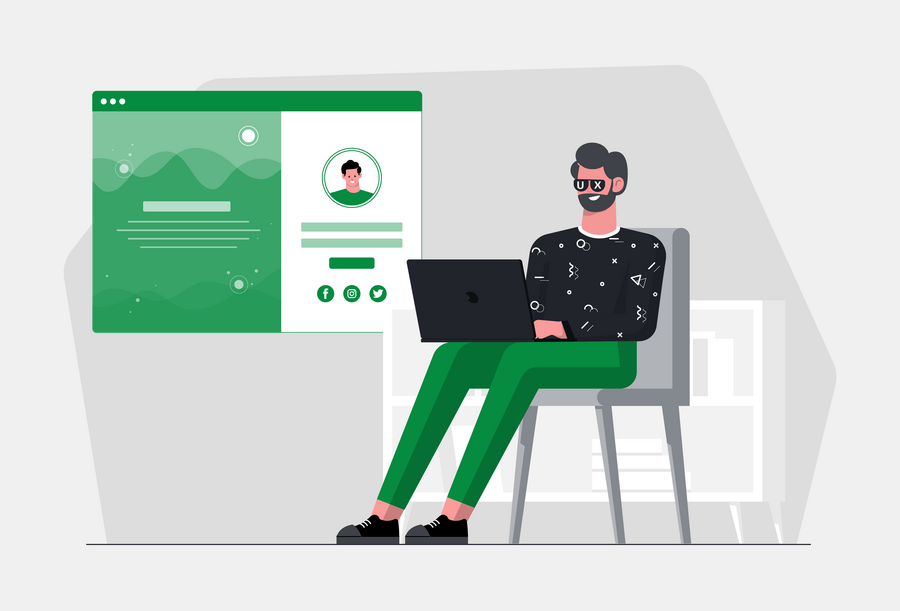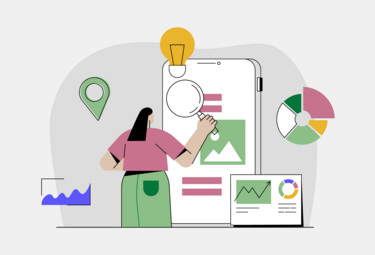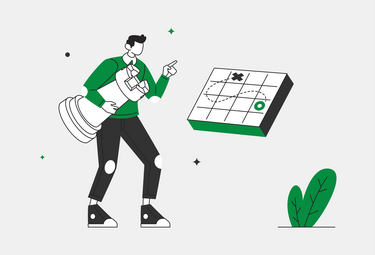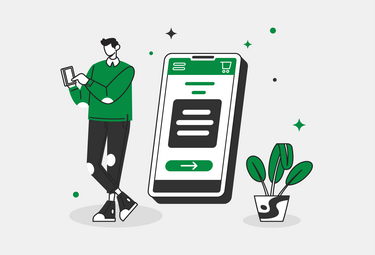Creating a product is a complex process that involves certain risks. A project idea alone, even aptly defined, does not guarantee success. It’s the execution aspect of the project that is crucial. It is important to focus on thoroughly understanding the client's expectations and analyzing his vision. Above all, it is necessary to verify the assumptions made by him, so as to be sure that the whole concept is based on reliable foundations - specific research and verified data.
Information systems are primarily intended to serve the end users, i.e. employees or consumers, so their needs should always be put first. Designing software through the lens of UX makes it possible to deliver useful solutions that provide real added value, in line with the expectations of the mentioned target groups.
UX in the product development process
User Experience (UX) is a concept in product development that can be considered on two levels. From the user's point of view, it refers to the overall experience and feel of interacting with a given digital product. It encompasses a range of factors, both controllable by designers, as well as other factors, resulting, for example, from personal preferences or environmental conditions. On the other hand, from the side of software providers, UX is understood as a series of activities aimed at increasing users' satisfaction with the use of a given system, application or website. It thus boils down to optimizing individual elements of the user experience, mostly in the visual layer.
For more information on this topic, see the article: UX and UI - what is it and what are the differences?
Closely related to the term UX is the concept of User Centered Design, which is precisely about designing solutions with the audience in mind first. In this case, in addition to the goals of the project, the characteristics of users, their characteristics and needs are also taken into account. The idea is to minimize the risk of failure by creating software that will be positively received by them.
There are four main principles of UCD:
- Clearly understand user requirements and the purpose of the project. At the outset, identify the people who will use the product, define the initial rules of operation, and answer the question: what problem does my product solve?
- Include user feedback to define expectations. Next, it is useful to gather the audience's requirements for the designed system and, based on them, set precise goals that the product must meet in order to satisfy the target group.
- Involve users early and actively in the evaluation of the project. It is a good practice to involve people from the target group in testing the first version of the product. Feedback, gathered, for example, through a short survey or during an interview, will help refine it and make it even more relevant.
- Iterative design process. The creation of the product should proceed in an orderly manner, based on a previously prepared project plan. The next phase of implementation should follow only after the completion of the previous one.
Usability testing, or qualitative UX research methods, is also an important component of UCD, which allows the product to be evaluated on the basis of observing the behavior of current or future users of the software. These include A/B tests, in-depth interviews or ethnographic research (conducted in a natural environment). They make it possible to analyze the paths of movement through the application, the ways of using certain elements of the interface, and to obtain a lot of other valuable information, important in the context of product improvement and optimization.
For an information system to respond to the needs of employees or consumers, it must solve their specific problem. It is worth remembering that the diversity of expectations may result not only from the specifics of the industry, but also from a particular organization. It is therefore very important to get to know the end users as much as possible and to treat them as part of the software being developed. Therefore, at the beginning of cooperation, it is a good idea to use techniques such as product workshops to better understand the client's requirements. If you want to learn what they consist of and how they are conducted at OnlineIdea, we encourage you to take a look at the articles: Product workshops - what are they and why should they be conducted? and Let's get to know each other - the beginning of cooperation with the customer is the key to success.
Benefits of User Centered Design
The fundamental advantage of User Centered Design is that it reduces to a minimum the chances that the project will not meet with the approval of the target group. User feedback in the process of software development can play the role of a kind of early warning system, which points out elements that require fine-tuning even before the final version is implemented. Considering the needs of end users at the design stage of a digital product increases the chance that it will meet their expectations and requirements, which will translate into better fulfillment of needs.
Benefits for employees:
- greater productivity and efficiency than off-the-shelf solutions,
- easier training process, thanks to the fact that already at the design stage the product has been adapted to the customer's expectations,
- satisfaction with the use of the software, which is reflected in the overall attitude towards the work performed.
Consumer benefits:
- satisfaction of use, since the product offers exactly the functionality they expect,
- greater chance of taking full advantage of the capabilities of a given system or application, due to the fact that the UX is tailored to the needs of the target group,
- easier adaptation than in the case of standardized solutions.
Even the most feature-rich system, without good UX, will not reach its full potential. Creating a product through the lens of user experience significantly increases the chance of project success. It is worth taking into account the needs of the users from the very beginning and thus avoid wasting time and money after implementation to make major changes to the system due to problems reported by the client. User-centered design is also a response to current market trends towards individualization/personalization of IT solutions.





